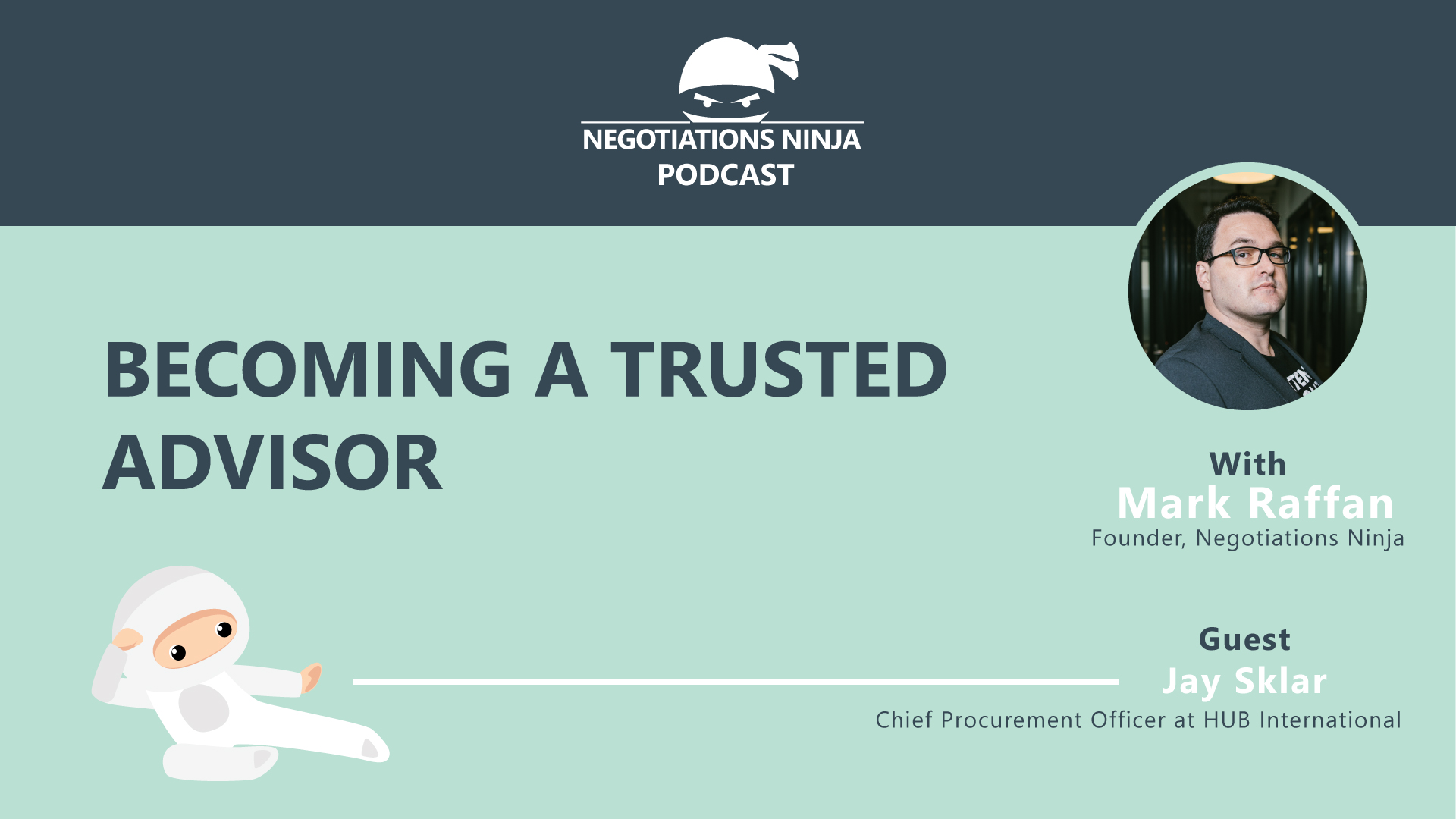We hear the term “Trusted Advisor” so much that I feel like it’s losing a bit of its meaning. So many of us have different ideas about what ‘it’ is and what it takes to become a trusted advisor. Our internal business stakeholders desperately need us to be trustworthy. So what does it take to build that trust? How can we advise internal stakeholders and improve decision quality around supply in the business?
In this episode, Jay Sklar, Chief Procurement Officer at HUB International, discusses how procurement people can become trusted advisors to our internal business stakeholders. Jay has great strategies on what to do to become a trusted advisor and, interestingly, what not to do as well.
Outline of This Episode
- [2:43] Learn more about Jay Sklar
- [8:04] Assumptions stakeholders have about procurement
- [12:30] Moving toward a consultative approach
- [14:54] What does it mean to be a trusted advisor?
- [20:12] How to get internal stakeholder buy-in
- [25:10] Things to say—and not say—to stakeholders
- [30:25] Procurement gets dealt difficult situations
- [36:07] The #1 thing you can do to become a trusted advisor
Assumptions stakeholders have about procurement
Most stakeholders assume that they only care about saving money and will do anything they can to save a nickel—even if it cripples the business. That’s not the case, but it’s the first thing procurement is accused of. Many stakeholders think procurement will force them to use specific suppliers due to budget constraints. Again, that’s not the case. Those situations never end well. Stakeholders need to be part of the decision-making process, which helps with buy-in and implementation. That’s why Jay works to become a trusted advisor with internal stakeholders.
Jay points out that people are unfamiliar with the role of procurement and the role we play. Or, prior experiences with procurement have soured their view.
What does it mean to be a trusted advisor?
There are different approaches, attitudes, and key phrases that people apply to the definition of “trusted advisor” based on their experience. Based on Jay’s experience, he believes being objective, creative, and avoiding knowing all the answers is key. You have to be open to new ideas. To fall into the trusted advisor role, you must look at everything through a wide lens. Your function is to connect the dots between departments to solve problems.
The trusted advisor is also the voice of brutal honesty. When looking at a solution or new agreement with a supplier, you have to consider the ramifications of decisions. Can you walk away? What is your exit plan? A trusted advisor acts in the firm’s best interest while assisting with individual needs. You want to always be in a position where you’re invited back to the table.
How to get internal stakeholder buy-in
Jay points out that you must be prepared. You have to make a great first impression to get invited to the table. From the internal perspective, you have to look at a few different things. What are you spending today? Who is driving buying decisions? Who are the suppliers? How will future demand mirror or be different from historical spend? Who are the suppliers and their clients? What can you learn about the firms that your competitors use?
Honesty is another critical element. Don’t pretend you know everything. If you don’t have the answers, be honest about it. If you have experience addressing a problem or situation, share how you’ve handled it in the past. You have to articulate as early as you can in a conversation what’s in it for the stakeholders. Listen to learn what else you can do to achieve stakeholder buy-in.
The #1 thing you can do to become a trusted advisor
What is the single most significant thing anyone can do to increase buy-in? Get out of your office. You can’t establish rapport over email. When Jay arrived at HUB, the CFO asked him to get to know the leadership teams in their 20 regions. Just by showing someone you’re willing to walk across the hall, jump in a car, or make an effort to get on a plane goes a long way. The level of engagement and trust that can be built by simply getting to know someone cannot be neglected.
Resources & People Mentioned
Connect with Jay Sklar
- Connect on LinkedIn
Connect With Mark
- Follow Negotiations Ninja on Twitter: @NegotiationPod
- Connect with Mark on LinkedIn
- Follow Negotiations Ninja on LinkedIn
- Connect on Instagram: @NegotiationPod




